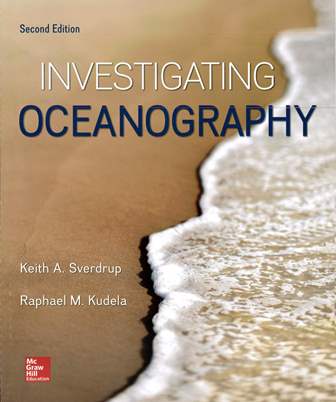書籍分類

Investigating Oceanography 2/e
作者:Keith A. Sverdrup, Raphael M. Kudela
原價:NT$ 1,250
ISBN:9781259254901
版次:2
年份:2017
出版商:McGraw-Hill
頁數/規格:490頁/平裝彩色
版次:2
年份:2017
出版商:McGraw-Hill
頁數/規格:490頁/平裝彩色
內容介紹 本書特色 目錄 作者介紹
- Description
This introductory oceanography text is intended to teach students the tremendous influence oceans have on our lives. They are encouraged to look at oceanography as a cohesive and united discipline rather than a collection of subjects gathered under a marine umbrella. Investigating Oceanography teaches students about the historical, geological, physical, chemical and biological characteristics of the ocean environment using remarkable images and photos. The authors have incorporated essays written by several scientists discussing topics in their fields of specialization. In addition to understanding processes and principles, the authors believe students must have a basic command of the language of marine science in order to understand the constant barrage of information concerning our planet and marine issues. By the end of this course, the authors want students to be prepared for future environmental discussions and the ability to make decisions as informed global citizens.


